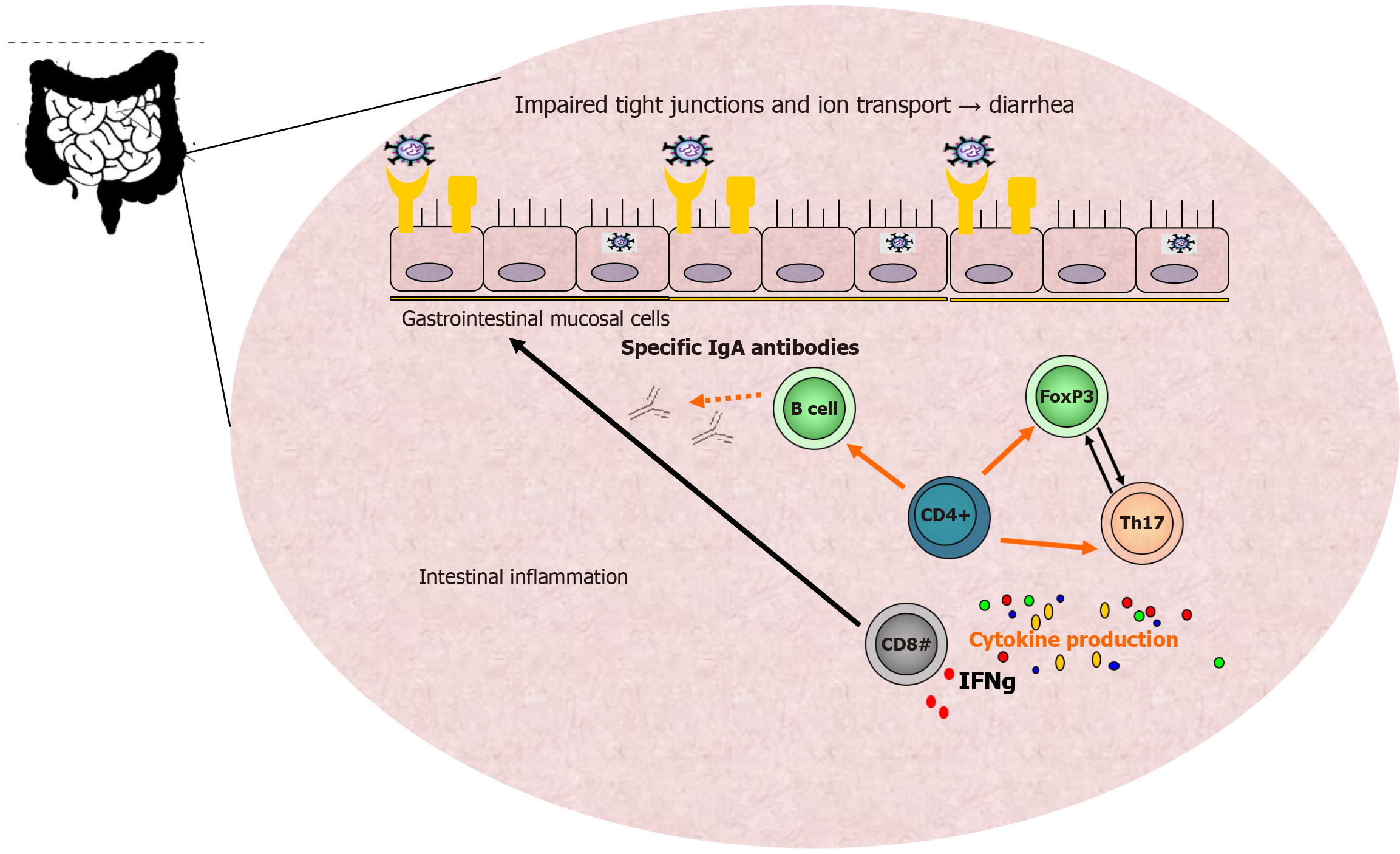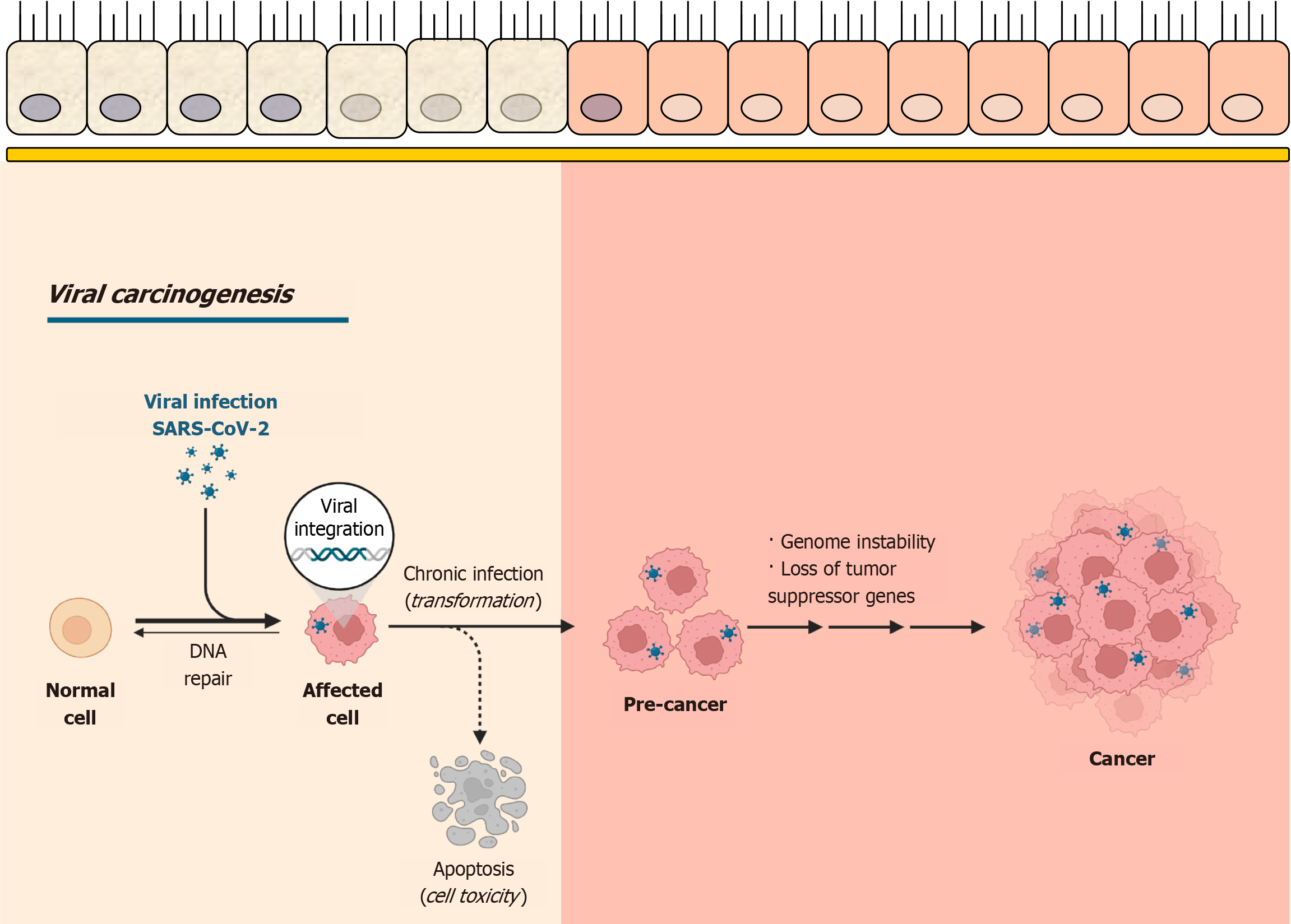Copyright
©The Author(s) 2025.
World J Gastroenterol. Aug 21, 2025; 31(31): 105665
Published online Aug 21, 2025. doi: 10.3748/wjg.v31.i31.105665
Published online Aug 21, 2025. doi: 10.3748/wjg.v31.i31.105665
Figure 1 Overview of severe acute respiratory syndrome coronavirus 2-induced diarrhea and intestinal inflammation.
This figure illustrates the key mechanisms involved in severe acute respiratory syndrome coronavirus 2-induced diarrhea and intestinal inflammation. The impairment of tight junctions and ion transport in the gastrointestinal mucosa leads to diarrhea. The immune response in the gastrointestinal tract also includes specific IgA antibodies produced by B cells. The activation of CD4+ and CD8+ T cells along with the differentiation of Th17 cells and the regulation by FoxP3, contributes to the inflammation observed in intestinal cells during severe acute respiratory coronavirus 2 infection. These immune interactions are shown to trigger cytokine production, including interferon-gamma, which exacerbates intestinal inflammation. IFN: Interferon.
Figure 2 Influence of severe acute respiratory syndrome coronavirus 2 on the major cancer hallmarks.
PI3K/AKT/mTOR: Phosphoinositide 3-kinase/protein kinase B/mammalian target of rapamycin; NF-κB: Nuclear factor kappa B; AT: Angiotensin; MHC: Major histocompatibility complex. The figure was crafted by the authors via https://BioRender.com.
Figure 3 Schematic representation of viral carcinogenesis induced by severe acute respiratory syndrome coronavirus 2.
Viral infection disrupts DNA repair mechanisms, enables viral integration into the host genome, and establishes chronic infection, potentially resulting in cellular transformation. This transformation promotes genomic instability, tumor suppressor gene loss, and progression from pre-cancerous lesions to malignancy. SARS-CoV-2: Severe acute respiratory syndrome coronavirus 2.
- Citation: Miteva DG, Gulinac M, Peruhova M, Velikova T. Exploring the oncogenic potential of SARS-CoV-2 in the gastrointestinal tract. World J Gastroenterol 2025; 31(31): 105665
- URL: https://www.wjgnet.com/1007-9327/full/v31/i31/105665.htm
- DOI: https://dx.doi.org/10.3748/wjg.v31.i31.105665











